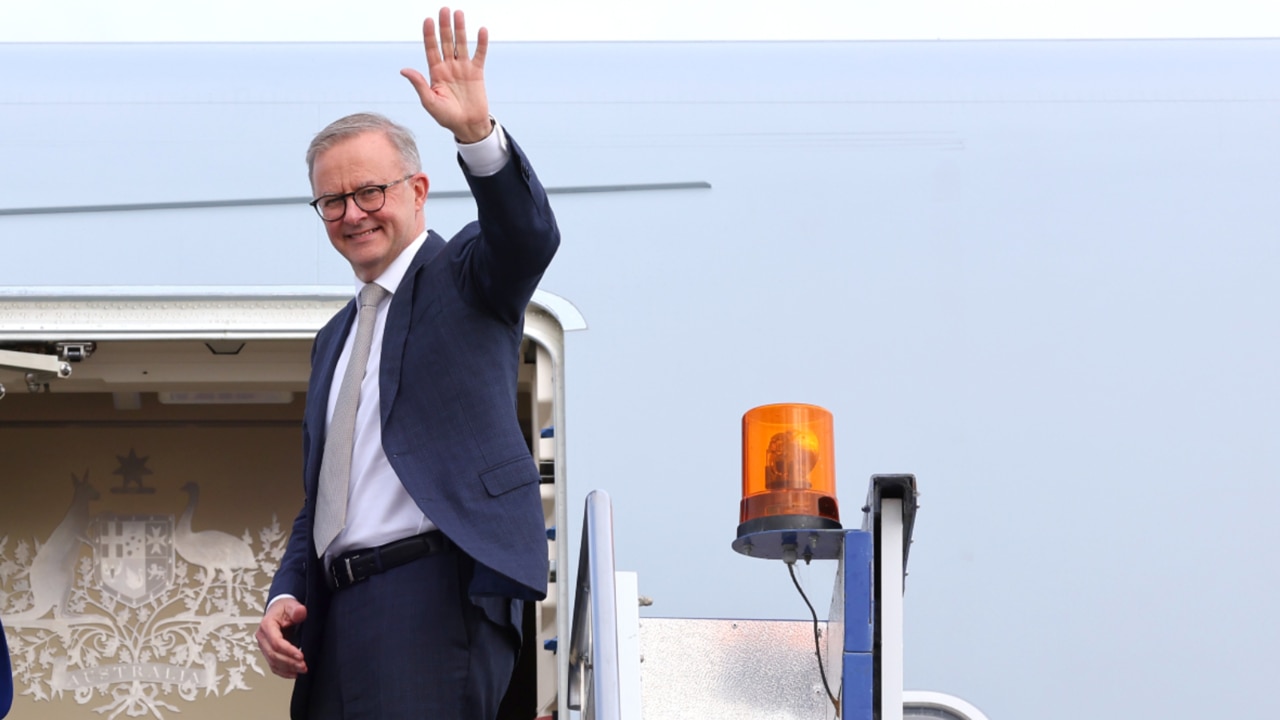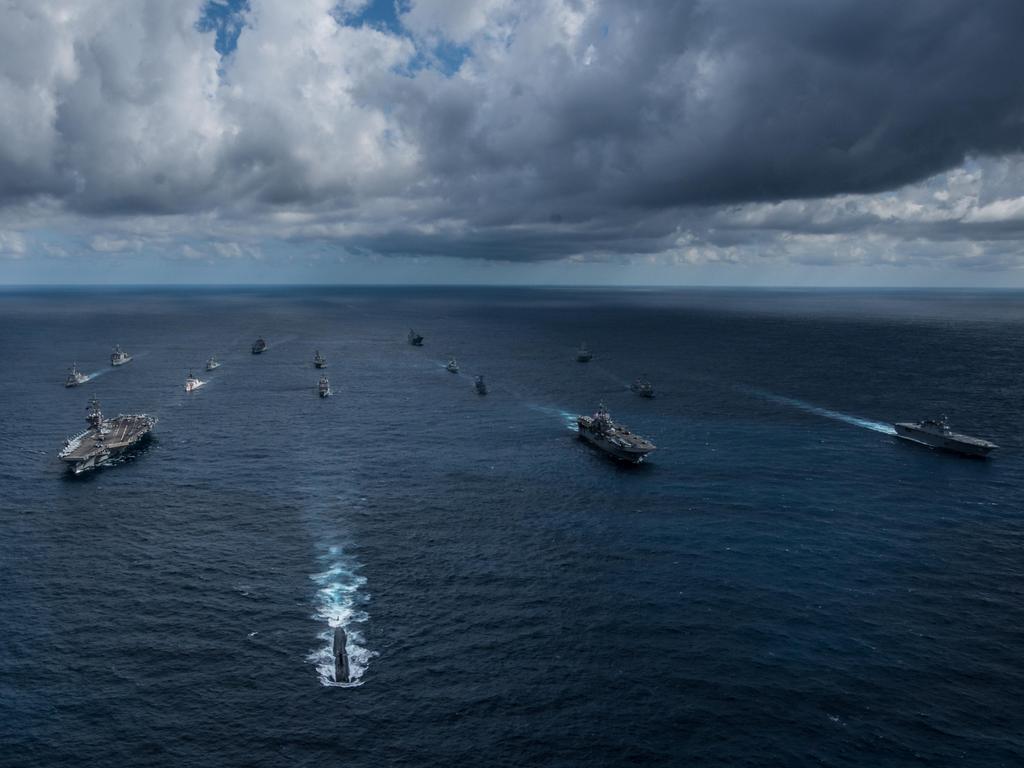China angered over new Australia and US military plan
Australia has teamed up with the US to make a move that has been slammed by Beijing. But experts say Australia still needs to up the ante.

Innovation
Don't miss out on the headlines from Innovation. Followed categories will be added to My News.
The US Army is moving hundreds of heavy vehicles across the Pacific. US Air Force bombers are increasing visits to Darwin. Now Washington and Canberra want to invite Tokyo to join the joint display of military strength across Australia’s Top End.
And that’s upset Beijing.
“People have always described Canberra as Washington’s ‘deputy sheriff’ in the Asia-Pacific region, but now Australia is actually playing the role of a spearhead in some scenarios,” a senior Chinese Communist Party (CCP) academic stated in response to the news coming out of the annual Australian-US ministerial talks (AUSMIN) this week.
And Chinese Foreign Ministry spokesperson Mao Ning denounced the alliance for “stirring up division and confrontation and undermining regional peace and stability”. “It is unpopular and has no market,” he added.

But People’s Republic of China (PRC) combat aircraft continue to probe the skies around Japan, Taiwan and the Philippines. And its navy and militia are attempting to enforce possession as “nine-tenths of the law” in the South China Sea.
That’s why the US and Australian governments have resolved to expand naval, air and troop infrastructure across Australia’s northern approaches. They decided US military stores, fuel, and ammunition would now be “prepositioned” at Australian bases. And Japan will be invited to join in.

A sign of things to come is already underway.
The US Army has begun testing its ability to ship heavy military equipment across the Pacific. The enormous USNS Watson delivered hundreds of “Army Prepositioned Stock” vehicles to Hawaii last month. But this was just the first step in Operation Pathway, a logistics exercise that extends through the South Pacific to Australia.
“We’re putting hard capabilities in these countries, with our partners, ” US Colonel Charles Green told local media. “On the posture side it is establishing some infrastructure and support that if we were to have to do this in the real world, we’re able to execute.”
Voices of authority
Commandant of the US Marine Corps General David Berger told reporters this week that “everybody around this table should not be comfortable with where we are or the rate at which we’re moving”.
It’s his job to be worried. Just as it’s the job of Beijing’s “wolf warrior” diplomats and academics to criticise anything not in China’s interests.
“The US is calling black white by hyping China’s “dangerous and coercive actions,” and the real intention is to reinforce its Indo-Pacific Strategy and contain China,” China Institute of International Studies deputy director Zhang Tengjun told the Chinese Communist Party’s Global Times. “Such co-operation aims at creating an Indo-Pacific version of NATO, the ultimate goal of which is to serve the US global hegemony.”
But Beijing’s actions are proving louder than its words. And Washington’s keen to talk tough.
“You’ve got a whole bunch of dynamics out there that are making it extremely difficult for good, sound, sensible foreign policy to prevail,” former Australian Foreign Minister Gareth Evans told the Australian National University’s Professor Rory Medcalf. “There’s an urgent need to restore the commitment to cooperative security, to addressing the big existential risk issues that we are now so acutely conscious of – and doing it in a way that makes the world rather safer and saner and less dangerous than it appears to all of us to be at the moment.”
Might makes right?
“On the one hand, US’ first island chain strategy cannot sustain its strategic intentions, so the US wants to avoid suffering huge losses by not deploying all of its forces there. On the other hand, it has eyes for building frontline military bases in areas like Australia and Guam,” Song told the Global Times.
He was referring to the vulnerability of major US military bases in Japan to overwhelming missile attacks and the need for a second line of defence.
US Defense Secretary Lloyd Austin told a joint news conference with Australian Defence Minister Richard Marles that the US would expand the number of bomber and fighter aircraft based in Australia and increase the US Army and Navy presence.
They added Japan would also be invited to use the facilities in a united front against “China’s dangerous and coercive actions throughout the Indo-Pacific”.
One of the main messages to come out of the Washington talks was the need for “agile” logistics. Put simply; this means the capability to quickly move military equipment, ammunition and supplies to where they’re needed. And to maintain them once they’re there.
While details are scarce, a joint communique refers to upgrading Australia’s three “bare bases”. These airfields (RAAF Scherger in Queensland, and Learmonth and Curtin in WA) were built in the 1980s with minimal facilities and no permanent presence. They’ve only been activated during occasional war games.
Now their parking aprons will be enlarged, barracks expanded, and new ammunition and fuel dumps installed.
Point of no return
“It’s easy to fall down. It’s much harder to come back,” former ambassador to Australia Fu Ying told the UTS Australia-China Relations Institute Wednesday. “Australia’s participation in the US-led tripartite security alliance AUKUS (gives) rise to doubt among people in China about its reliability as a co-operation partner.”
She was referring to the recent high talks between Prime Minister Anthony Albanese and Chairman Xi Jinping, which sought to normalise relations and end punitive sanctions against Australian exports.

But being a reliable partner can present its own problems.
“For a long time, Australia and Japan have had no independent foreign policy. Their foreign policy is only part of the US policy. They practice US strategy, which means they are tied to US’ anti-China chariot and oftentimes serve US interests at the cost of their own,” Song accused.
It’s a sensitive issue.
“It’s been described as a fear of entrapment,” Mr Evans says. “The fear that if we put too many eggs in the American basket, we’re going to be sucked into a war, not of our own choosing, that will be very, very, very, very devastating if we get caught up in it.”
And that’s before we take into account the way Washington’s political mood has been swinging wildly between abandoning and reinforcing its allies, he adds.
“I think that Australia does have to very seriously up the ante in terms of what we’re spending on defence, and that money has to be very sensibly spent,” Evans says. “I think we (must) work for the maximum possible self-reliance and the minimum possible enmeshment with the United States – even while keeping as much as we can of that alliance relationship.”
But he adds he’s “reasonably optimistic” conflict will be avoided.
“I don’t think we need to be as nervous as some people have been getting about this,” says Mr Evans. “But that, of course, doesn’t mean that you can avoid tending to your defence needs because – as always with defence – the issue is the potential adversaries’ capability, not their assumed current or future intent. And in that context, we will have to be on our guard that things may, in fact, prove less benign in the not-too-distant future.”
Jamie Seidel is a freelance writer | @JamieSeidel
Originally published as China angered over new Australia and US military plan









